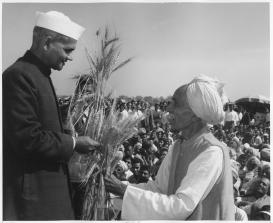As in Europe and North America, high-input agriculture expanded rapidly after 1945 in the global South. Funded initially by US foundations, what were later to be called “Green Revolution” programs were established in Mexico in 1943, elsewhere in Latin America in the 1950s, and in Asia from the 1960s, all with the aim of boosting the yields of maize, wheat, and rice.
Despite achieving substantial increases in yield, it was becoming apparent by the late 1960s that the Green Revolution’s technology was also causing environmental damage as well as aggravating social inequality, leading to political unrest. From the 1970s, accordingly, development agencies devoted particular attention (and increased funding) to alternative approaches designed to help farmers working in unfavorable conditions (e.g., participatory plant breeding, agroecology, farming systems research). Although such approaches were at that time widely perceived as “new,” they had in fact been developed much earlier, often by colonial agricultural services during the interwar period. It would appear, therefore, that proponents of high-input agriculture after 1945 were either ignorant of this older work or simply chose to ignore it. In either case, the evidence suggests that we need to identify the specific conditions after 1945 which enabled proponents of agricultural "modernization" to define that process in an exceedingly narrow way.

